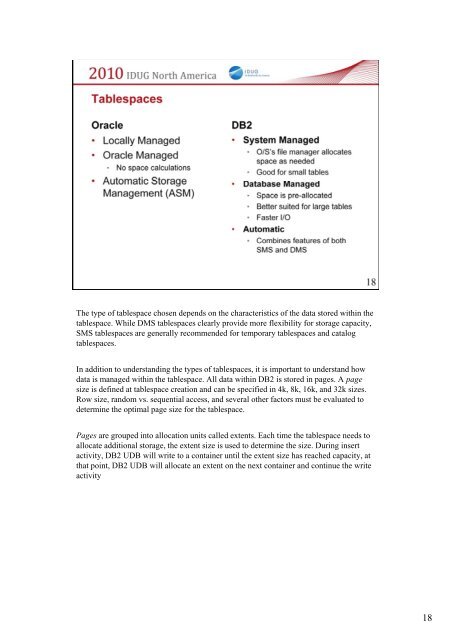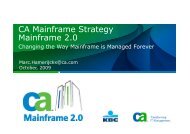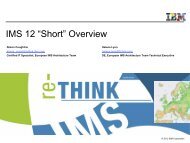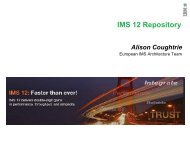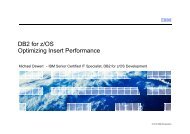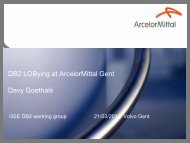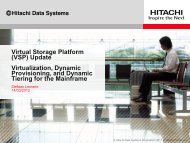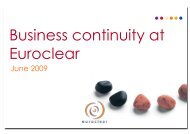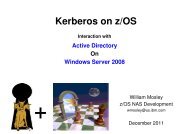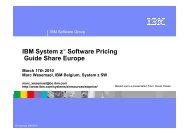DB2 for the ORACLE DBA - GSE Belux
DB2 for the ORACLE DBA - GSE Belux
DB2 for the ORACLE DBA - GSE Belux
You also want an ePaper? Increase the reach of your titles
YUMPU automatically turns print PDFs into web optimized ePapers that Google loves.
The type of tablespace chosen depends on <strong>the</strong> characteristics of <strong>the</strong> data stored within <strong>the</strong><br />
tablespace. While DMS tablespaces clearly provide more flexibility <strong>for</strong> storage capacity,<br />
SMS tablespaces are generally recommended <strong>for</strong> temporary tablespaces and catalog<br />
tablespaces.<br />
In addition to understanding <strong>the</strong> types of tablespaces, it is important to understand how<br />
data is managed within <strong>the</strong> tablespace. All data within <strong>DB2</strong> is stored in pages. A page<br />
size is defined at tablespace creation and can be specified in 4k, 8k, 16k, and 32k sizes.<br />
Row size, random vs. sequential access, and several o<strong>the</strong>r factors must be evaluated to<br />
determine <strong>the</strong> optimal page size <strong>for</strong> <strong>the</strong> tablespace.<br />
Pages are grouped into allocation units called extents. Each time <strong>the</strong> tablespace needs to<br />
allocate additional storage, <strong>the</strong> extent size is used to determine <strong>the</strong> size. During insert<br />
activity, <strong>DB2</strong> UDB will write to a container until <strong>the</strong> extent size has reached capacity, at<br />
that point, <strong>DB2</strong> UDB will allocate an extent on <strong>the</strong> next container and continue <strong>the</strong> write<br />
activity<br />
i<br />
18


